Tideswell
OS Grid ref:- SK1574
The large Peak District village of Tideswell, known locally as 'Tidza', is situated 6 miles (9.7 km) to the east of the spa town of Buxton. The village nestles at the head of Tideswell Dale, a shallow valley above the deep gorge of the River Wye. There is some disagreement as to how the village acquired its name. Some sources claim it was named after a Saxon chieftain named Tidi, whose burial ground is located at Tideslow to the north of the village. Others dispute this source and state that the name derives from a "tiding well" which may still be seen in the garden of Craven House, in the north of the village.

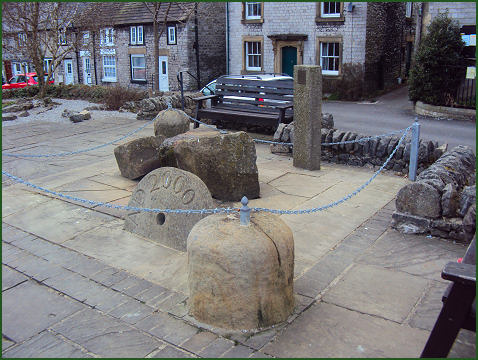
An ancient settlement, Tideswell is listed in the Domesday Book of 1086 where it referred to as 'Tidesuuelle' and recorded as the property of William Peverel, a Norman knight, who is suspected to be an illegitimate son of William the Conqueror and held vast estates in the area and occupied Peveril Castle at Castleton.
The village was granted a charter for a market in 1251. In the medieval period, Tideswell was a market town known for lead mining. While hunting in the Royal Forest of the Peak, King Edward I, known as 'the Hammer of the Scots', stayed at Tideswell for three days in 1275.
Tideswell retains a great deal of character and is a hotchpotch of quaint cottages and architectural gems, which all sit tightly in network of alleys, lanes and narrow roads around various squares. It is regarded as a centre for the tradition of Well Dressing in the Peak District villages where springs or wells are decorated during the summer months.
Tideswell has a range amenities including craft and gift shops, cafes and pubs.
The Church of St John the Baptist, the 'Cathedral of the Peak'
Tidewell's large and splendid parish church of St John the Baptist, described by the poet laureate Sir John Betjeman as 'a grand and inspiring church of the fourteenth century' is otherwise known as the 'Cathedral of the Peak', due to its size and magnificence.
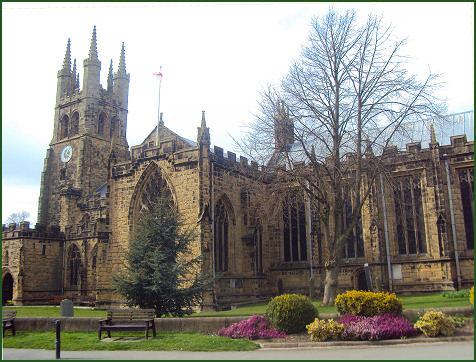

Described in Rawlin's 'Churches and Chapels in The County of Derby as ' without exception the most perfect and beautiful specimen of pointed architecture to be found in the County, - or perhaps in any other parish church of its size in the entire Kingdom. There are two main styles present in the building, the nave, the aisles and transepts are in the handsome late gothic style, while both the chancel and tower are in the perpendicular style.
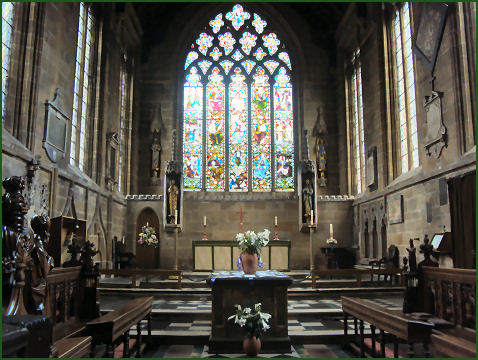

Dating from the fourteenth century, the church contains three fifteenth century misericords. The building replaced a small Norman church which previously occupied the site and was constructed between approximately 1320 and 1400. The building work was interupted by the outbreak of the Black Death or Bubonic Plague in England.
The church contains a number of interesting memorials and some of the finest brasses in the Peak District area, including those to to Sir John Foljamb, who died 1383 and Bishop Robert Purseglove, died 1579, who is depicted in pre- Reformation vestments, a great benefactor of the village, Bishop Robert founded Tideswell’s Royal Grammar School (which closed in 1927) in 1560.
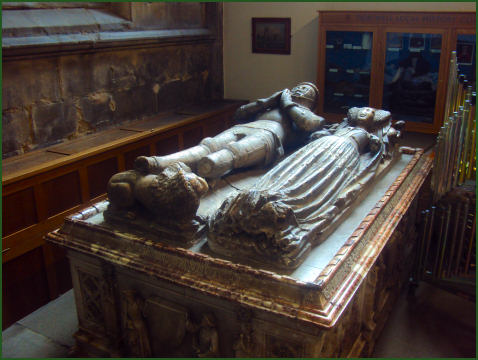
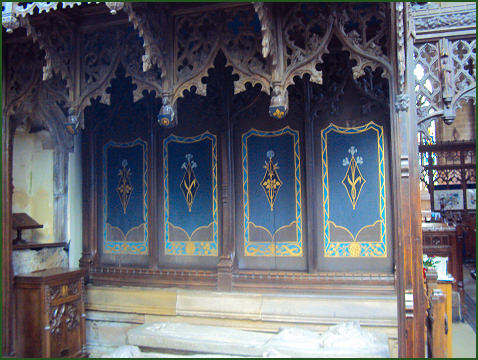
The Bower chapel contains a splendid medieval tomb bearing the recumbent effigies of of Sir Thurstan de Bower and his wife Margret (pictured left). The Bower family held the position of "sergentry" to the kings of England for five generations and held land of the king in the Royal Forest of the Peak for services rendered to the monarch. In the centre of the Chancel stands the altar tomb of Sir Samson Meverill (1388-1462) who is said to have fought with King Henry V at the Battle of Agincourt and served in France with the Duke of Bedford against Joan of Arc.
The colourful stained glass east window depicts the Tree of Jesse and is by Heaton, Butler and Bayne of Nottingham, it dates to 1875.
In the churchyard lies a sundial, the stone steps which it is mounted on are thought to be those of the village's original medieval market cross.
Nearby places of interest
Three Shires Head, is a beauty spot where the three counties of Derbyshire, Cheshire and Staffordshire meet is a short walk from the Wildboarclough.
Macclesfield Forest, once the centre of a Royal Forest created by the Norman kings for the purpose of hunting game such as deer, wild boar and wolves. It once encompassed all the area from Disley to the River Dane. The forest is home to a herd of red deer, while the reservoirs contain a wide variety of wildfowl.
Shutlingsloe is the third highest peak in the Cheshire (Shining Tor being the highest and Whetstone Ridge the second ) with an elevation of 506 metres (1,660 feet), the summit offers excellent views. On a clear day the mountains of North Wales are visible from its summit.
Adlington Hall, set in the heart of the Cheshire countryside, the current building was begun in 1315, although late medieval and Tudor remodeling have since changed its appearance.
